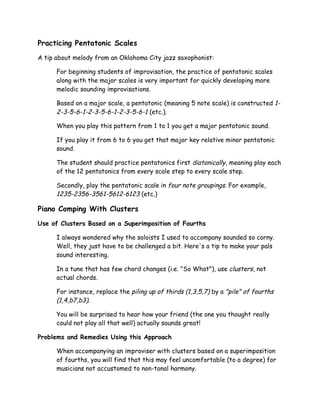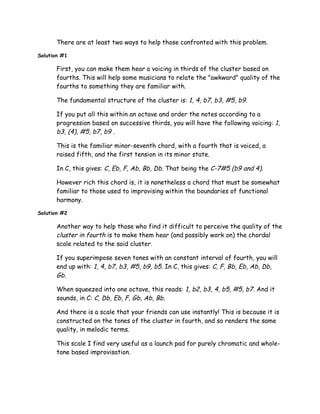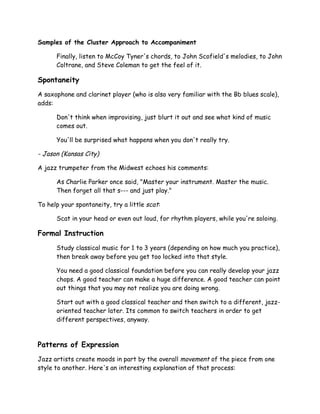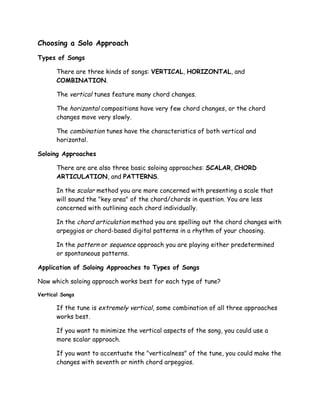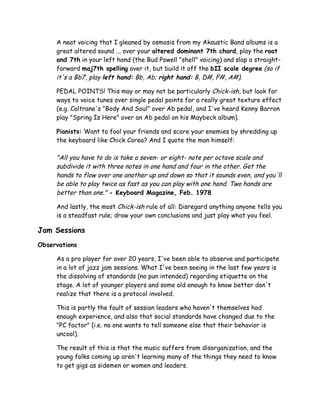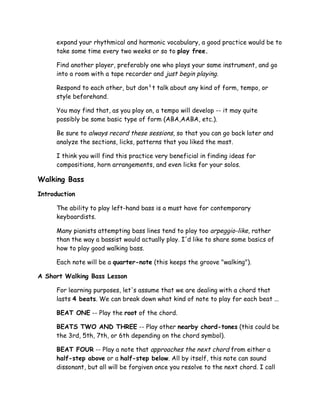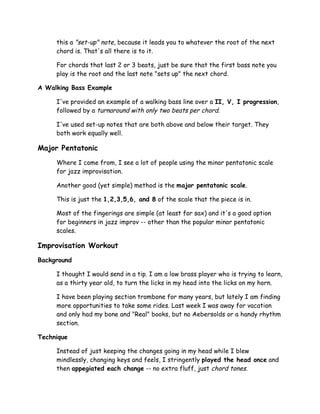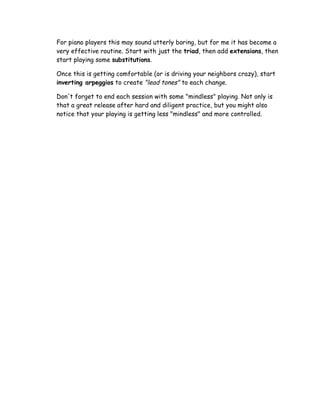The document provides tips for jazz improvisation, including practicing melodic lines using scale patterns, holding chord tones longer, and accenting chord tones when improvising within a scale. It recommends transcribing solos and running licks through the circle of fifths for practice. Additional tips include comping with clusters based on superimpositions of fourths to challenge soloists, practicing pentatonic scales for melodic improvisation, and warming up by playing tunes rather than scales. Recommended resources include magazines, books, and radio shows for jazz pianists seeking to improve their improvisation skills.
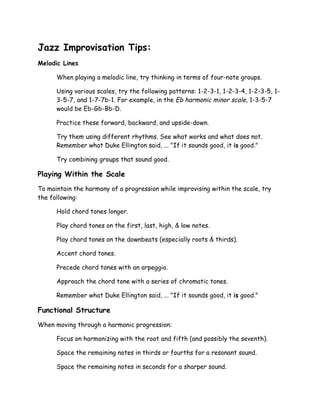

![A Blues Progression
Listening is one of the biggest parts of improvisation. Listen until you can
sing back the solo, the bassline, and even the piano voicing without even
thinking about it. This will give you phrasing.
You must listen to jazz, not only to learn how to play, but also for pleasure.
You will learn a lot by giving everything a chance.
Here is a typical blues progression in the key of F: F7-F7-F7-F7-Bb7-Bb7-
F7-F7-C7-Bb7-F7-F7.
Here is the same blues progression in the style of Charlie Parker [each
chord is one bar, except for those in ( ), which indicates two beats for each
chord]: F6-(Bb7-Bdim)-F7-(Cm7-F7)-Bb7-Bdim-FM7-(Am-D7)-Gm-C7-(Am-
D7)-(Gm-D7).
Although this may not be known to most novices, the second progression
adds a lot more movement to the blues.
A Solo With An Identity Crisis
Over a progression involving a single chord for a few measures (such as Miles
Davis' "So What") play a mode per measure.
Start with Dorian, switch to Phyrgian, then loop a sweet Aeolian, to a nice
Melodic Minor, then a Harmonic Minor, etc...
Giving props to the root, let the 5th slide around.
Play games with the 6th.
Use ascending chromatic phrases involving the 2nd to the 4th, and the 6th
to the root.
Vocal Improvisation
The best way to learn to improvise is to practice singing "non-worded" songs
through a chord progression. This is easiest for pianists, but if you play a
wind instrument, do this singing while listening to your favorite music.
Once you become good at that, play what you sing. The singing helps you feel
what you're about to improvise.](https://image.slidesharecdn.com/aas01170-jazzimprovisationtips-140325192831-phpapp02/85/jazz-improvisation-tips-3-320.jpg)


